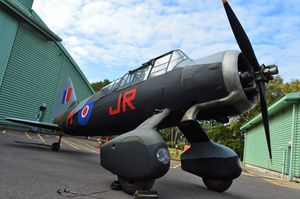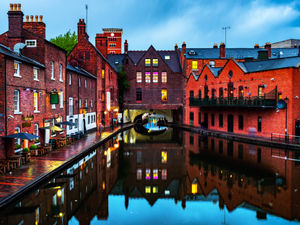Rare Second World War plane restored at RAF Museum Cosford
The only surviving Second World War Westland Lysander plane of its kind has been restored to its former glory at RAF Museum Cosford.

The Westland Lysander III is the only surviving Special Duties variant that has survived, and it has undergone conservation work including a new fabric outer skin and complete repaint in the Museum's Michael Beetham Conservation Centre. Formerly displayed at the Museum's London site in No 225 Squadron markings, the Lysander is now painted in No 161 Squadron Special Ops colour scheme, reflecting its service towards the end of the war in non-operational special transport services.
Following the Lysander's arrival at Cosford in November 2016, the aircraft underwent an in-depth inspection and condition assessment followed by a few minor structural repairs. The airframe's damaged fabric covering was replaced while a team of volunteers cleaned and lubricated mechanical systems back to a functional state.
The aircrafts biggest transformation comes from the recovering of its airframe in a traditional Irish linen fabric, hand sewn by the Museum's Surface Finish Technician and then strengthened using original doping techniques.
Surface Finish Technician Clive Roberts said: "Thousands of stiches were made attaching the linen to the fuselage, wings and tailplane followed by six coats of doping, a UV microwave protection layer, primer and then finally painted in its 161 Squadron Special Ops colour scheme.
Special Duties
"It's a slow process but essential to preserving the aircraft for as long as possible. We sought the help of a Lysander expert based in Switzerland, who provided us with original photographs and technical drawings to help with the paint scheme. One of the photos shows that during R9125's service with 161 Squadron the cooling gills were incorrectly fitted so the camouflage no longer lined up. Since this has been documented we will change ours to match that."
The Museum's example, serial number R9125 first became operational with No 225 Squadron in 1940 as a coastal patrol and photo reconnaissance aircraft, based along the south coast of England. It took on the Special Duties role with No 161 Squadron in 1944 and was operational for a further two years until they became obsolete from the RAF in 1946.
Visitors to the RAF Museum Cosford will get the first glimpse of the aircraft during the annual Conservation Centre Open Week in November, before it's transported in the new year to the Museum's London site for public display.
From November 11 to 16, visitors can get up close to the current conservation projects undertaken by the team of Technicians, Apprentices and Volunteers at Cosford during the annual Conservation Centre Open Week. In addition to the Lysander, visitors will also be able to view the continuing progress on the Handley Page Hampden, Vickers Wellington, Range Safety Launch, Messerschmitt Me 410, Dornier Do 17 and the LVG C.VI and speak with the teams who carry out this vital work.




